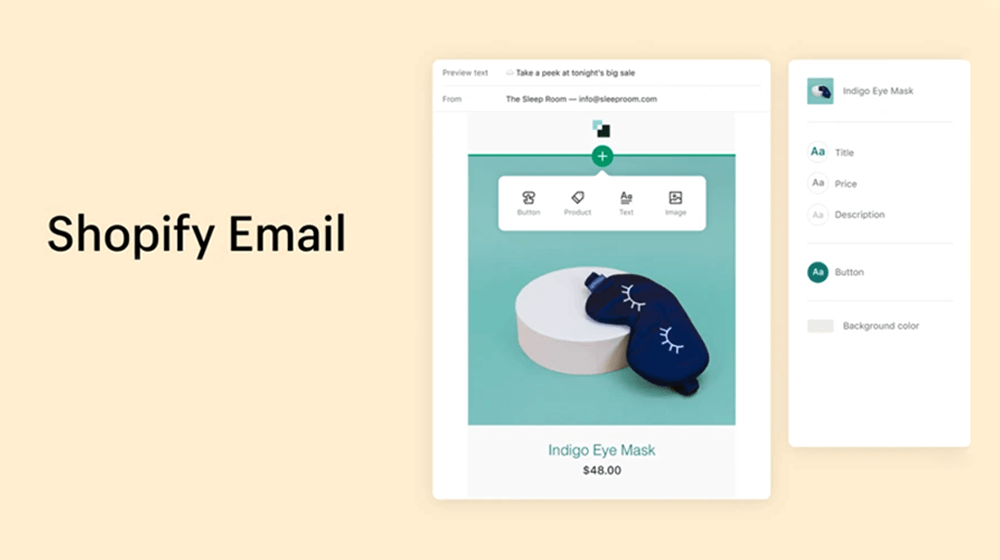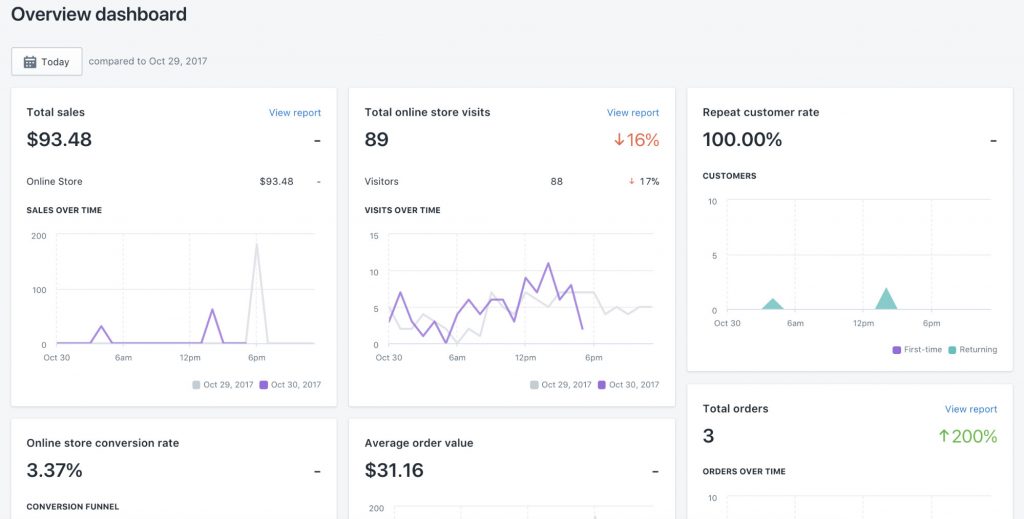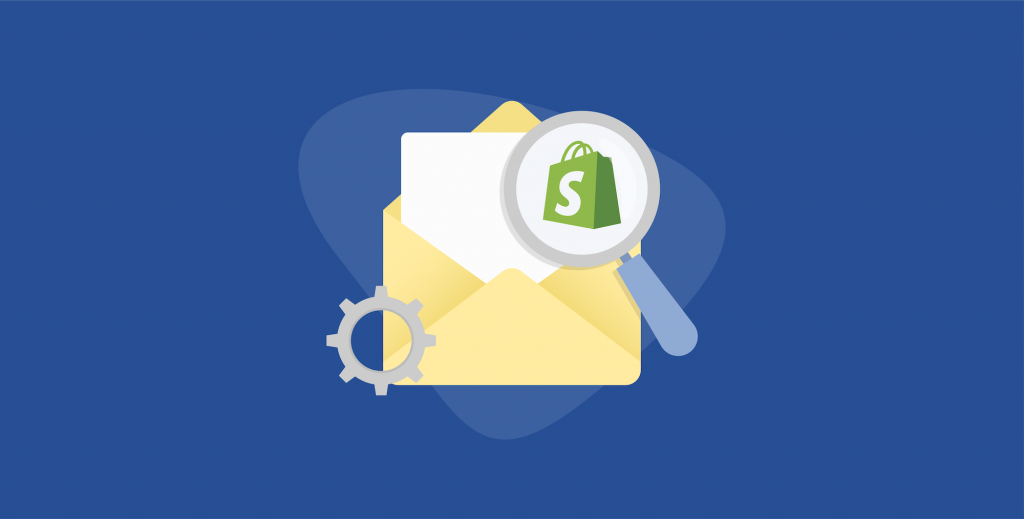02 Apr

Email marketing is largely recognized as one of the most cost-effective ways to generate sales for your Shopify store.
First, email requires much less of an investment than most other digital marketing tactics. Another benefit to especially strategic email marketing is that it gives you a high degree of control over your store’s campaigns. With social media or paid advertising, an algorithm change outside of your control can undermine your efforts and time spent. But with email marketing, you’re communicating directly with your subscribers: people who have a confirmed interest in your store and products.
Indeed, email can be one of the best tools for promoting your products. In fact, a SmartInsights survey found that professional marketers rate email marketing as more effective than any other digital channel.
What is email marketing?

Email marketing is the practice of sending marketing messages to prospective and current customers via email in order to sell, educate, or build loyalty.
Email is an “owned” digital marketing channel that is, the sender fully controls the content and distribution and typically works best when used to send personal, relevant messages to segmented lists of recipients. Email is an especially important tool in relation to ecommerce, where it’s used for sending transactional, promotional, and lifecycle messages (which we’ll cover in more detail below).
What is Shopify email?
Shopify email is a user-friendly email tool for merchants that gives you all the essential building blocks you need to run effective email marketing campaigns. This Shopify-based option is especially handy in that you can create and manage promotional email campaigns directly from your Shopify account.
Moreover, it’s also more affordable than other options if your store’s just getting started. There are built in templates that can save your time. These range from sale announcements to special holiday offers, to promotions for particular products, and more. Also, your logo and store colors get pulled into these templates automatically. Once you’ve got your template, you can edit the text, buttons, and images to customize. All your work gets saved automatically, so you don’t need to worry about losing progress.
As a bonus, you can segment your audience to target specific groups of shoppers (maybe you want to send a promotion to only subscribers who have purchased with you before, for example). You can also send the emails directly from your domain name, which helps improve brand recognition and avoid spam filters.
Also, for each campaign, Shopify tracks open rate, add to cart rate, and sales conversion rate. With these metrics, you can improve your email marketing strategy iteratively, come up with clever segmenting ideas, and drive even more sales.
Requirements for using Shopify email
To use Shopify email, you need to have an online store with Shopify, and to have the Online Store sales channel installed. If you want to send emails to your subscribers using Shopify Email, then your store needs to have a paid Shopify subscription plan with a payment provider set up. If your account is on the trial plan, then you can create email messages, and send test email messages to yourself using Shopify Email, but not to your subscribers.
How to use Shopify email?
Here’s how to set up Shopify Email and start your first campaign:
- First, download Shopify Email from the Shopify App Store.
- After the app is installed, go to your Shopify account dashboard and select the “Marketing” option in the left sidebar.
- Click on the “Create campaign” button.
- Select “Shopify Email.”
- From here, choose a template.
- In the “To:” field, you can choose whether you want to send the email to all the customers that have subscribed to your mailing list, or a segment of your audience. There’s a 200 character limit for the subject line. There’s also a 200 character limit for the preview or hint text, which is an optional field for text that will appear next to the subject line in your subscribers’ inboxes. Once you’ve filled out these fields and customized the body content with images and a careful proofread, you’re set.
Shopify Email analytics

To help you see how your email marketing campaigns are performing, Shopify shares the following metrics with you:
- Delivery rate: the percentage of your emails that were sent successfully
- Open rate: the total number of recipients who actually opened your email — retail open rate benchmarks average around 15-18% or slightly above, so it’s good to aim for something in this range
- How many recipients clicked a link within your email
- How many unique visitors the email generated for your store
- How many times the email led to a visitor adding an item to their cart
- How many times the email led to a visitor placing an order
- The dollar amount of sales generated by the email
- How many times the email was reported as spam
- The number of subscribers who unsubscribed after receiving the email
Shopify Email pricing
All merchants with a paid Shopify plan have 2,500 free emails to send at the beginning of every month. Email cost is calculated using the following rules:
- Emails are counted based on each individual email address that an email activity is sent to. For example, sending 1 promotional email to 800 subscribers counts as 800 emails.
- Unused emails don’t carry over to the following month.
- You can send additional emails beyond the 2,500 free emails at a cost of $0.001 USD per additional email. For example, sending 1000 additional emails would cost you $1 USD. You aren’t billed for the additional emails until the cost reaches $0.005 USD.
- There’s no additional subscription plan and Shopify Email only charges for what you send.
- You can send a maximum of five email campaigns per week. This resets every seven days at midnight UTC.
What can you do with Shopify email

With Shopify Email you can:
- Send branded emails to your subscribers in just a few clicks – directly from your Shopify admin
- Save time with ready-made templates that automatically pull your logo, product images, descriptions, prices, and URLs directly from your store
- Easily customize your email by editing text, buttons, images and more to make it your own
- Import customer lists into Shopify
- Segment emails to ensure the right message gets to the right person
- Track results including open and click-through rates, products added to carts, and purchases
- Send emails from your domain with little setup if you purchase your domain on Shopify. Support for non-Shopify domains is coming soon.
Building your Shopify Email subscriber list
Due to online privacy laws and compliance, it’s really important that only visitors who have opted in to your mailing list get sent your store’s marketing emails. Buying an email list from a third party or using some other method to send emails to people who haven’t opted in is bad for your brand’s reputation, you risk potential fines, and your messages will likely end up going directly to spam anyway.
To build your subscriber list organically, you can include signing up for emails as the default option on your checkout page:
- From your Shopify account’s dashboard, select the “Settings” option in the left sidebar.
- Select “Checkout.”
- By default, your checkout page will already display an option for customers to sign up for promotional emails. But you’ll need to manually activate the setting that preselects this option for your visitors.
With this setting enabled, customers will need to opt out of your subscriber list, versus needing to actively opt in. This small step can lead to many more sign-ups for your store, but you’ll still want to be mindful about the frequency of communication with your subscribers, and sending especially relevant messages.
- Click the box next to “Preselect the sign-up option” and save your settings.
You can also use a newsletter sign-up section on your store’s homepage to collect contact information from interested visitors.
Depending on the Shopify theme you’re using, you may already have such a section on your homepage. For example, Shopify’s default “Debut” theme has a newsletter sign-up form located in the footer of the homepage.
To really improve your store’s email list-building efforts, it’s best practice to offer great value upfront: a discount or the chance to win some sort of prize (gift card, free product, etc.) in exchange for a store visitor’s email address. Above all, make sure it’s clear that the visitor is aware they’re agreeing to receive your marketing emails.
Conclusion
Shopify emails help you in managing campaigns easily. One of the best things about email marketing is it’s a low-risk channel to explore. Once you’ve used an enticing email message to attract a visitor to your site, you still need to convince them to take whatever action it is that you want them to take (purchasing a particular product, signing up for an event, etc.)
